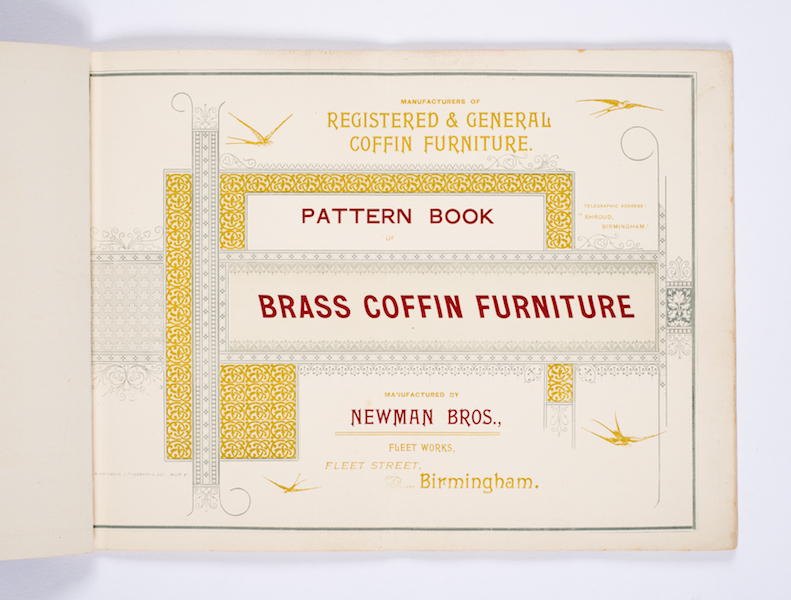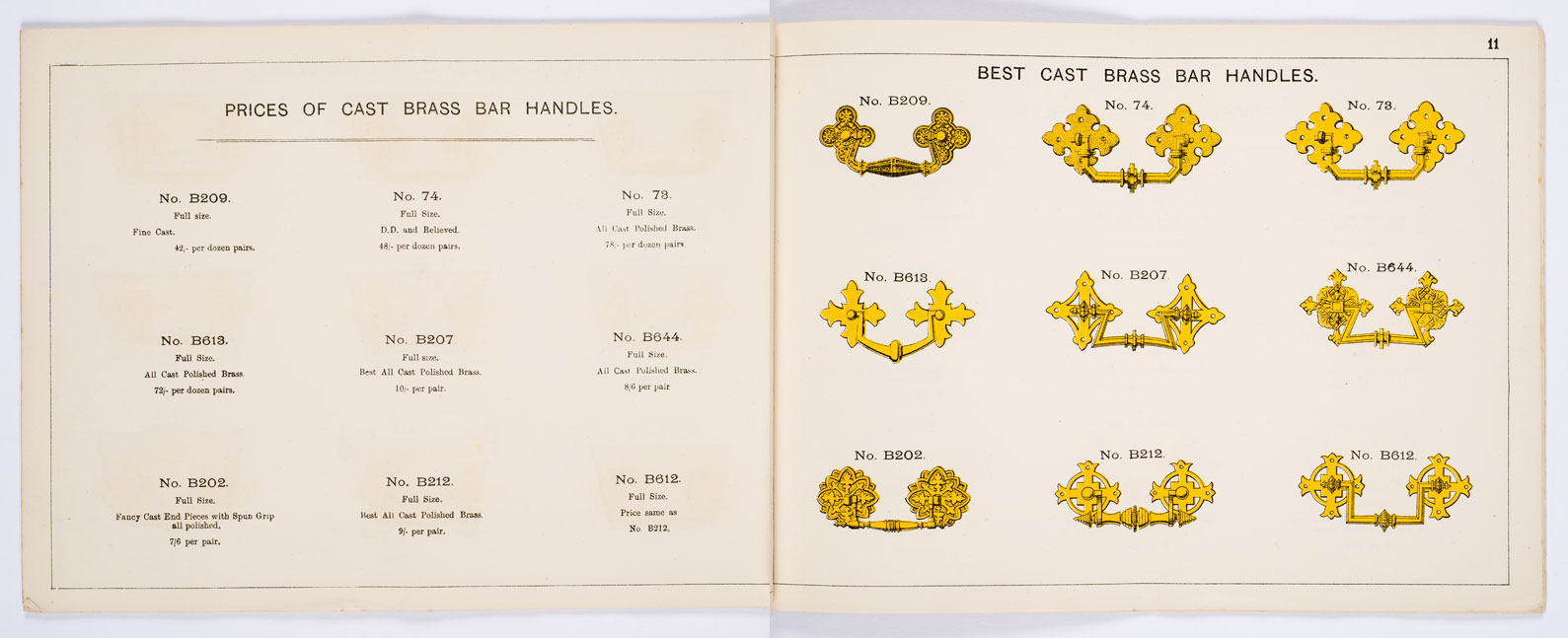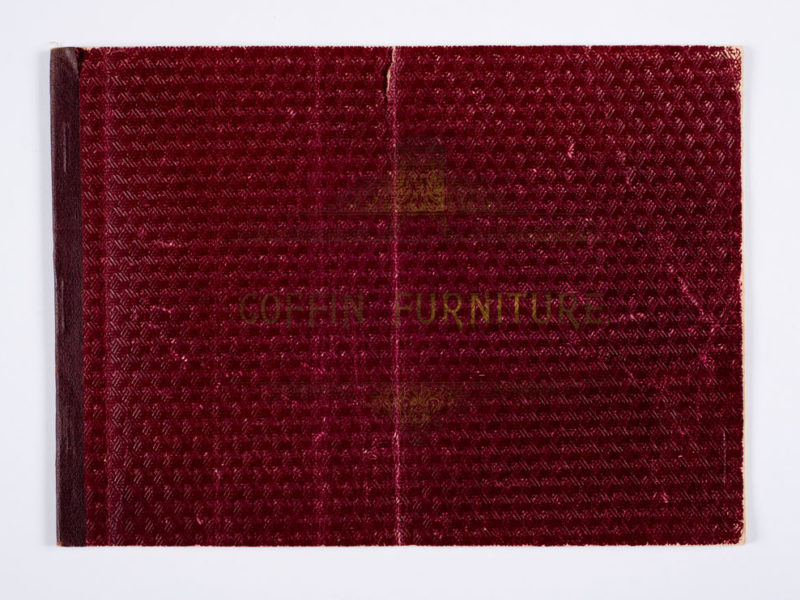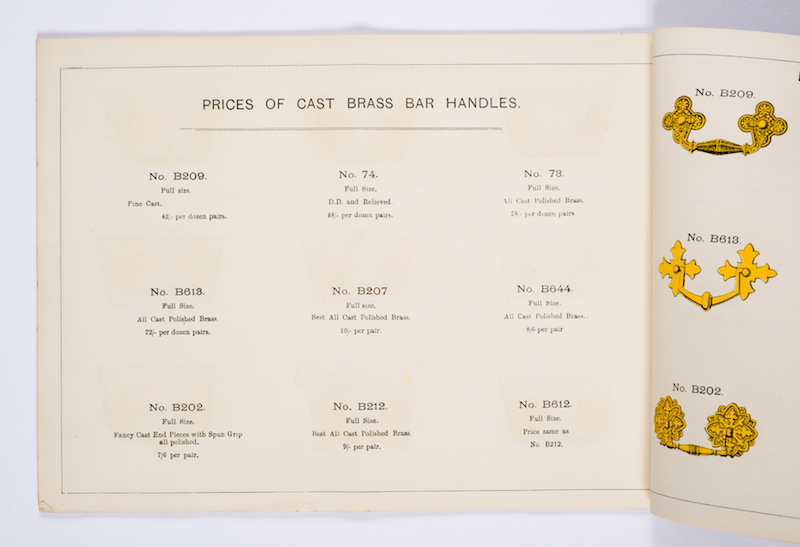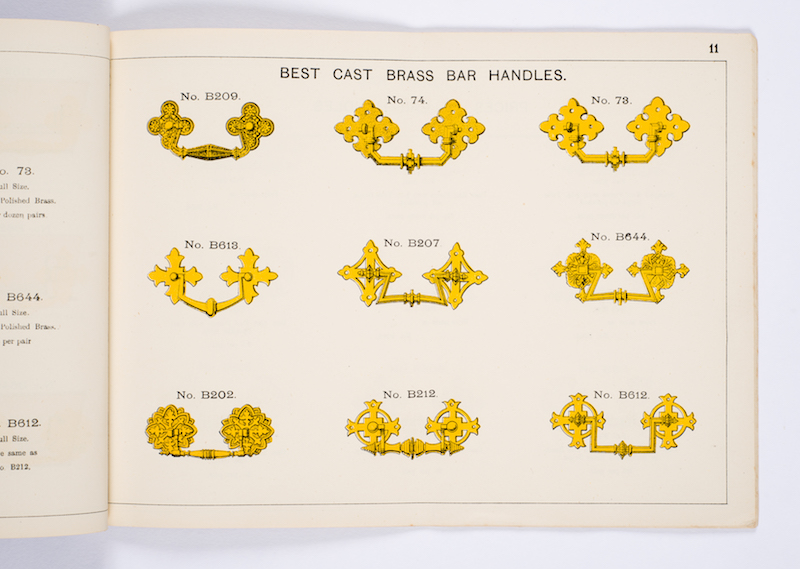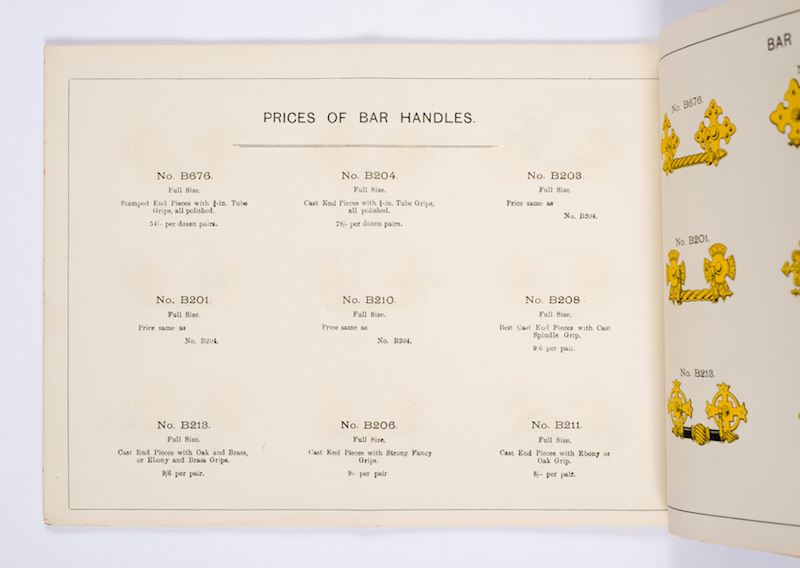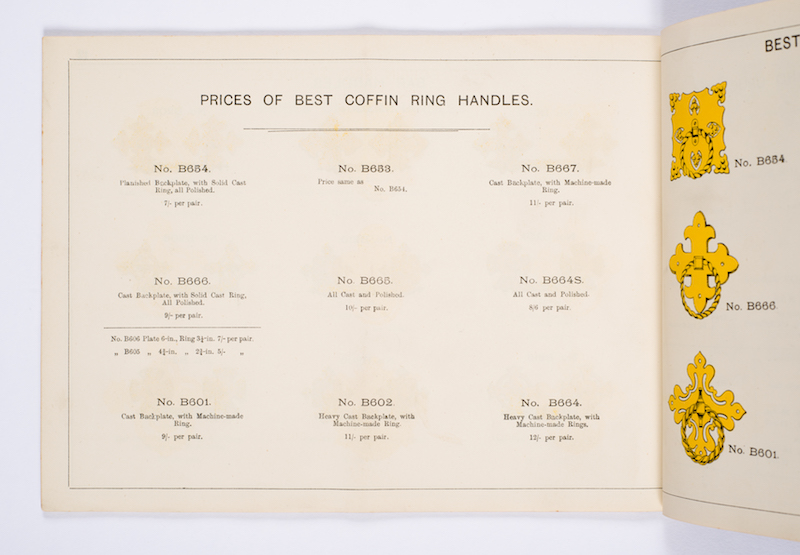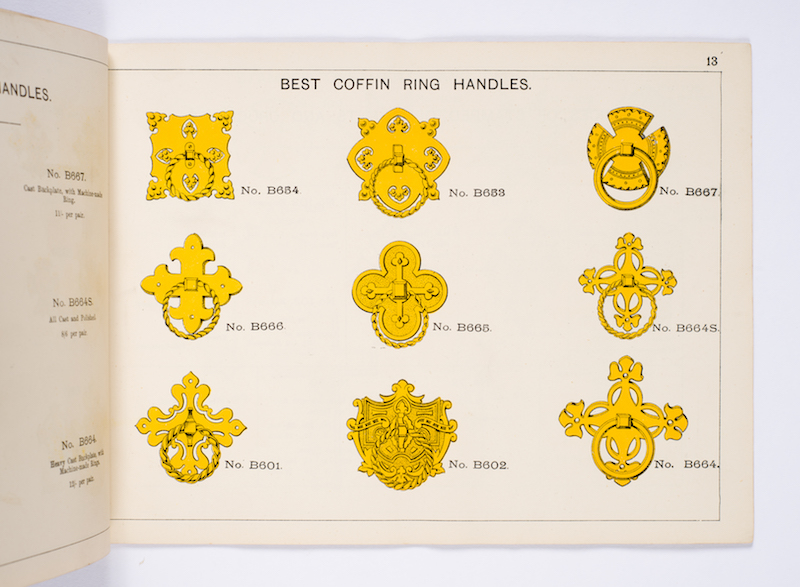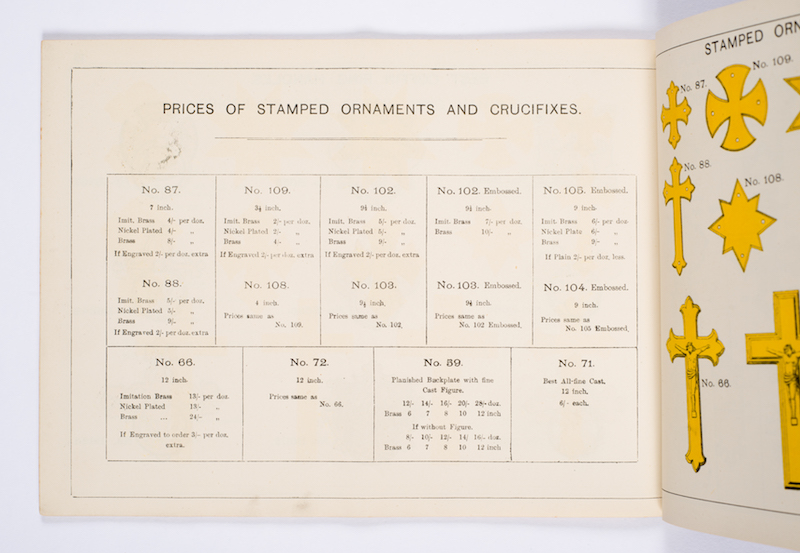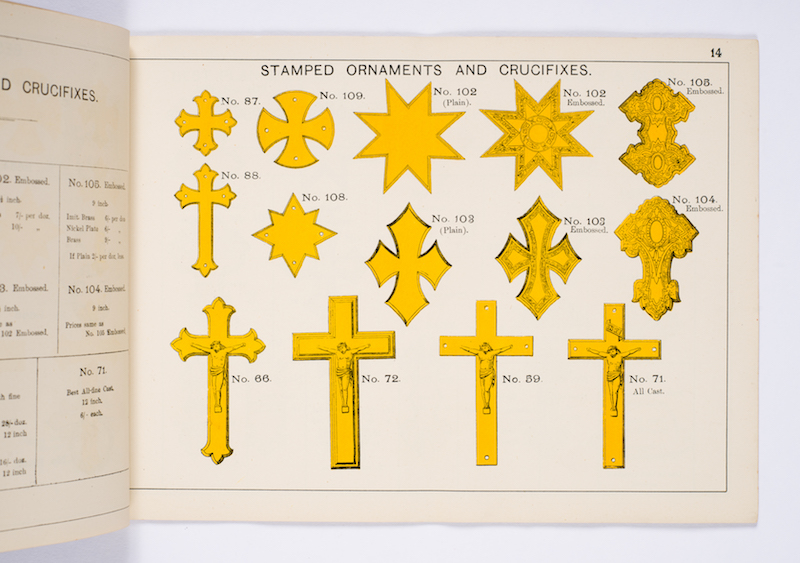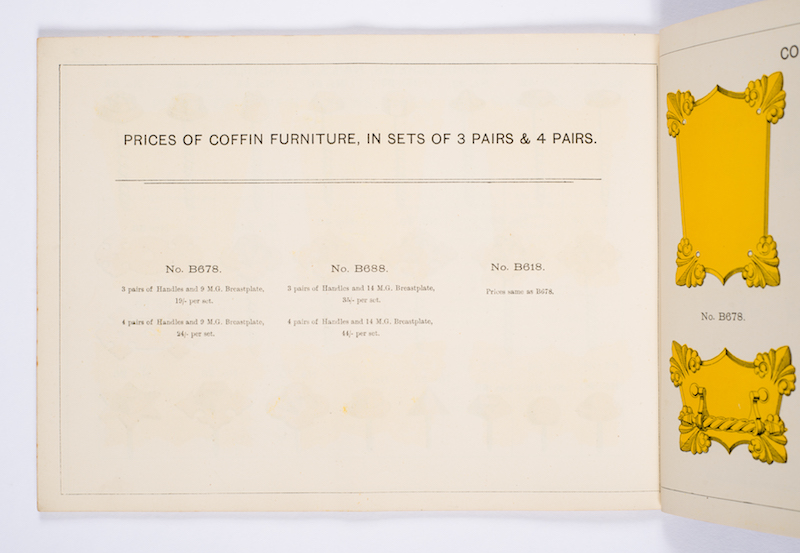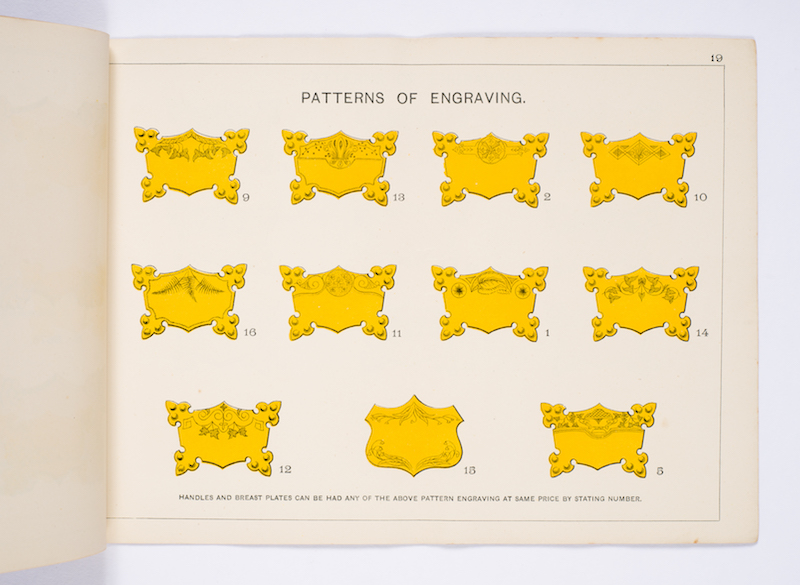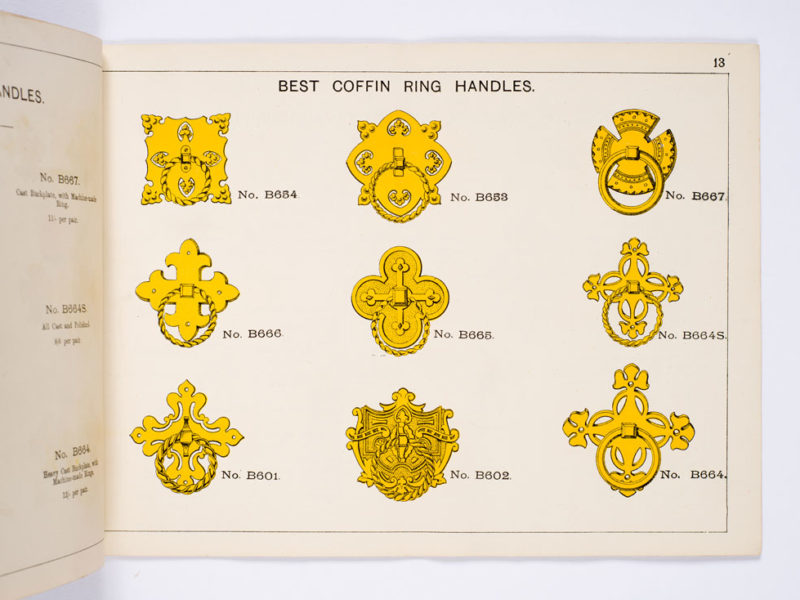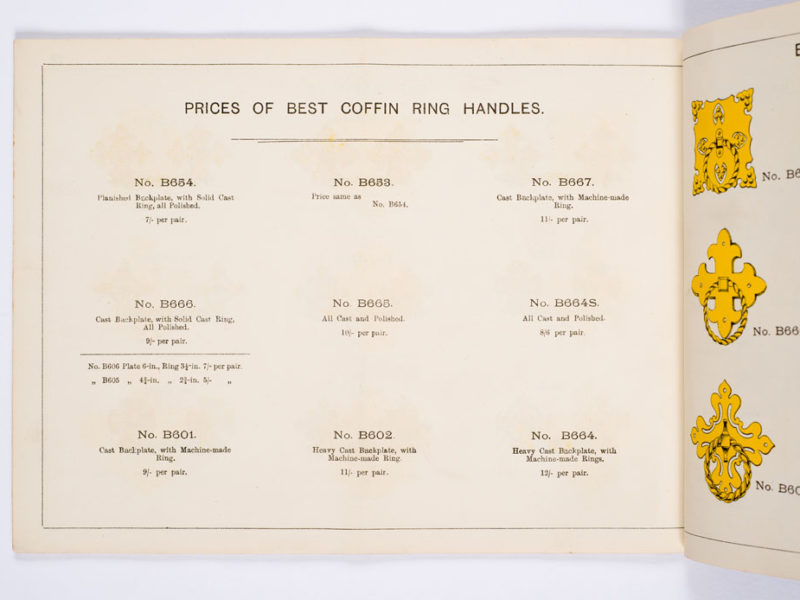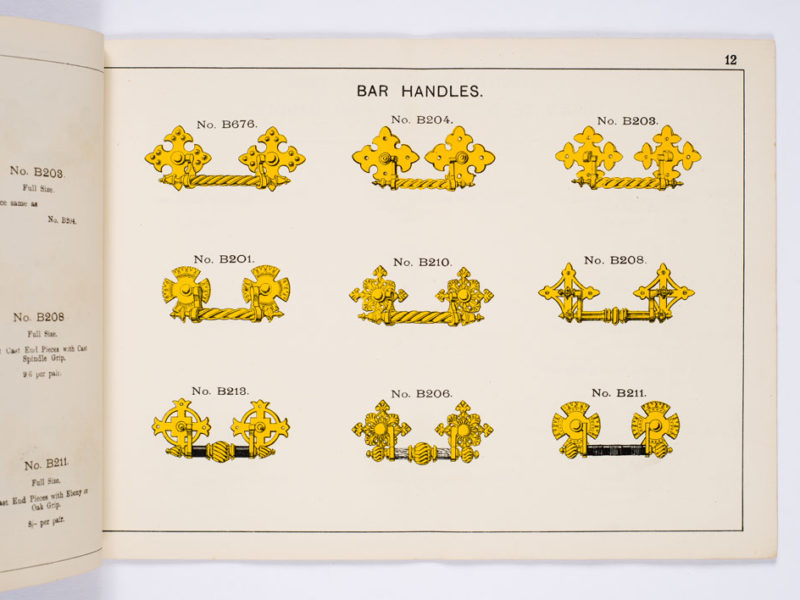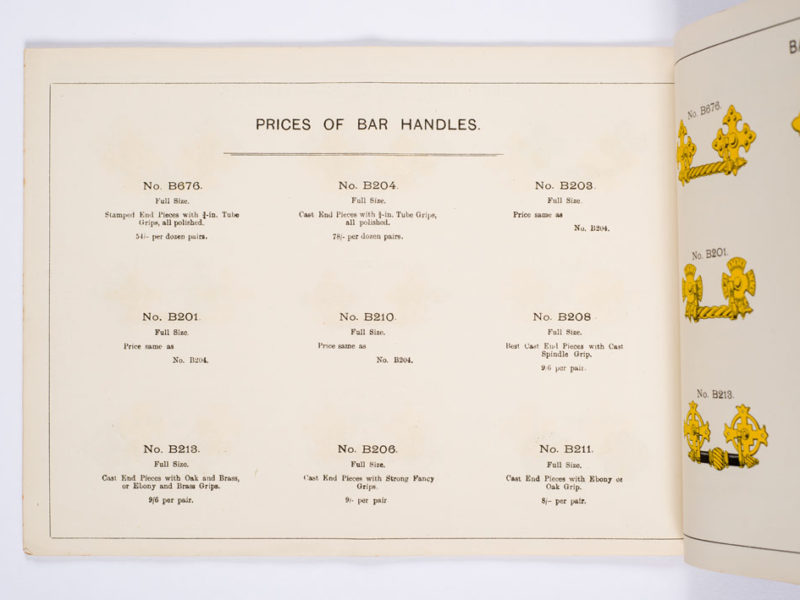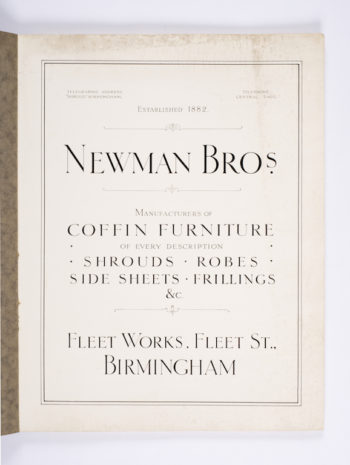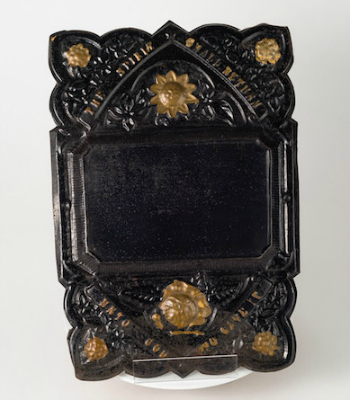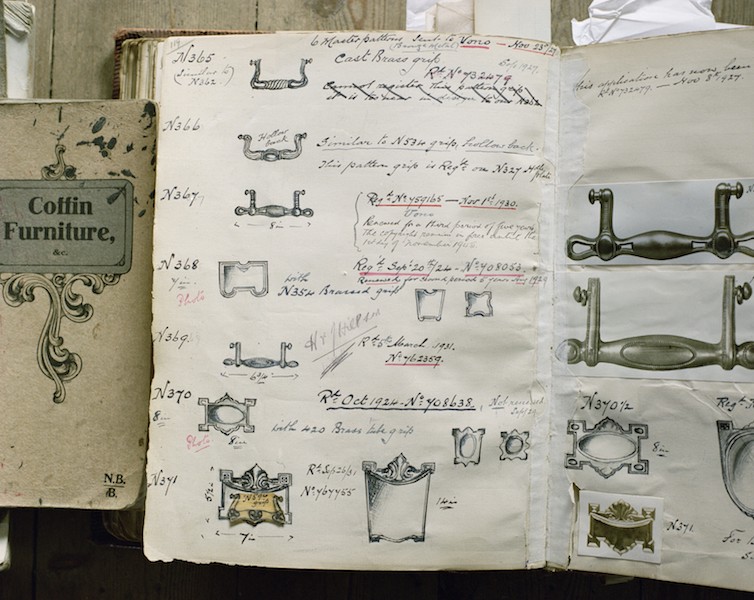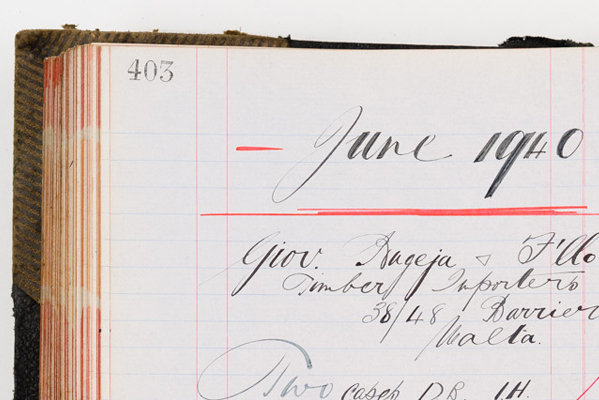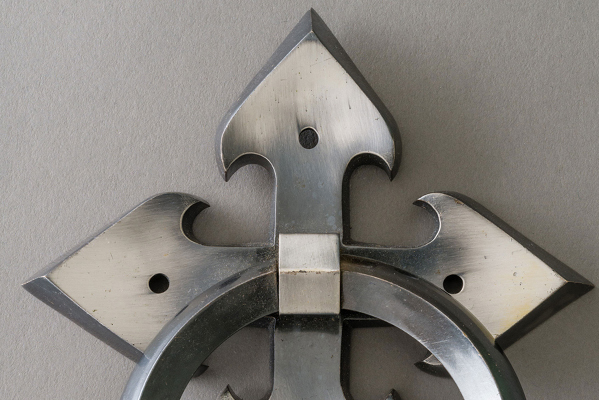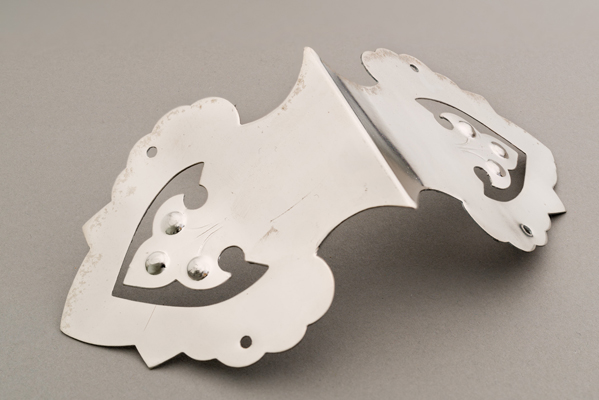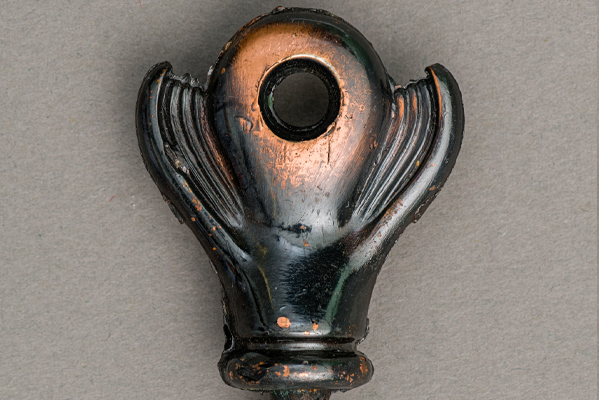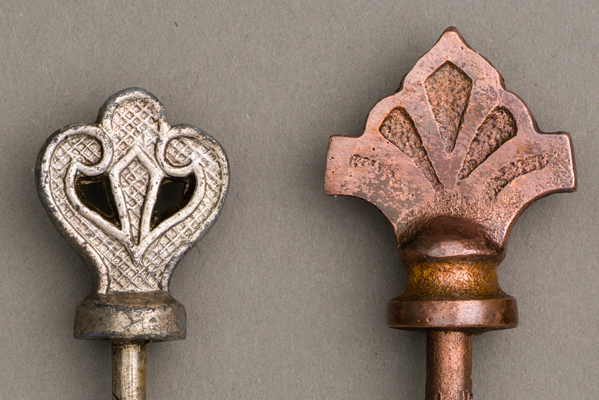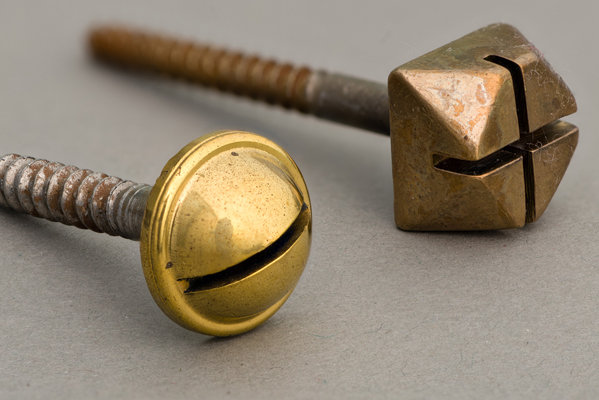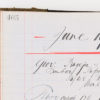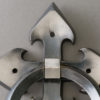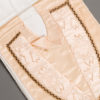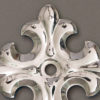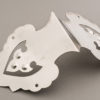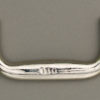What they made at the factory
In the Newman Brothers’ collection, there are six different trade catalogues dating from the early years of the factory to the 1960s. These give us a good idea of what the company sold, although not everything in the catalogues was made at the factory. Likewise, there are some Newman Brothers’ products that don’t feature in the surviving catalogues. Whether this is because some catalogues do not survive, or because some products came in and went out of fashion in between the production of the catalogues, we just don’t know. The catalogues were aimed almost exclusively at funeral directors.
The earliest catalogue we have may well date from 1894, when the factory opened, or a little later. The highest-quality products were made of solid brass, but there were cheaper versions available in “imitation brass” (plated), and nickel-plated. The types of products include cast ‘bar’ and ‘ring’ handles, stamped ornaments and back plates for handles, and stamped breast plates (the plate that goes on the lid of the coffin and is engraved with the name of the deceased), together with coffin nails and screws, corner clips and wreath holders. Very few of the products in this catalogue remain in stock, although the dies for one or two of the designs are still on the shelves of the Stamp Room.
Click here to see Newman Brothers’ next catalogue from circa 1910.
